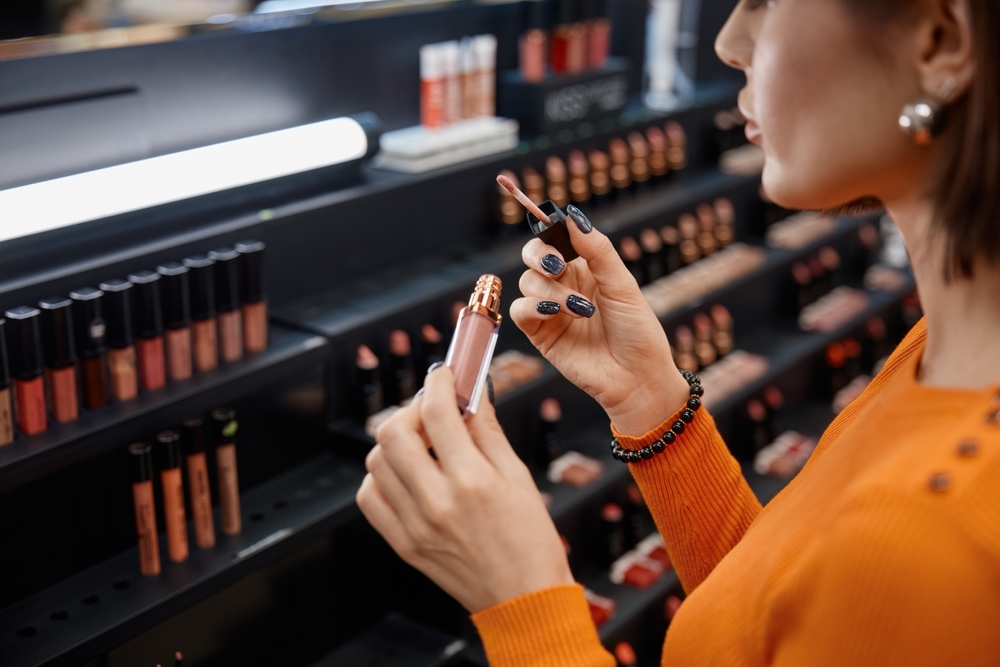In recent years, a vast majority of the most celebrated luxury and fashion brands have launched a new beauty or fragrance line, aiming to capture a new customer segment and expand business in an area with great profit potential. However, the dramatic increase in the number of players has made this market even more competitive, reducing opportunities for success and creating the need for a well-structured and innovative strategy to stand out in the eyes of the consumer.
What factors determine the success or failure of launching a beauty line in a market already saturated with novelties?
Il mercato del beauty di lusso negli ultimi cinque anni: un trionfo di novità
Compared to the past when the luxury beauty market was dominated by a few brands such as Chanel and Dior, the last five years are notable for the large number of new brands that have approached this sector.
A prime example is Prada, which in 2024 launched “Prada Beauty” a new make-up, fragrance, and skincare line, a celebration of the essentiality and intellectual elegance that characterizes the brand. The philosophy and image of this line have been developed with the aim of staying true to the iconic image of Prada’s style, combining minimalism and luxury and aiming for a natural, sophisticated beauty that does not need excess to impose itself. The geometric, clean-lined packaging recalls the linearity and essentiality of ready-to-wear, while the formulas are designed to marry the brand’s innovative spirit. Prada has also chosen to focus on neutral shades and soft matte finishes, for a look that appears authentically Prada.
The success of the launch of this line can be found in its respect for the Brand’s image and values and in the creation of a product and marketing strategy capable of capturing the attention of a clientele interested in the brand in its entirety. In this way, Prada has managed to attract new customers who begin their journey with the purchase of a beauty product, but who have great potential to evolve into future customers of the leather goods and accessories or ready-to-wear lines.
Another example comes from French fashion house Celine, which announced the launch of a new make-up line planned for fall 2024. The announcement was greeted with incredible enthusiasm by lovers of the brand and the industry’s leading media. In pure Celine style, the line was launched in October through the release of a first, single “hero” product: le Rouge Triomphe, a red lipstick, described by the fashion house as “effortless,” designed by Hedi Slimane with a texture reminiscent of the preciousness of haute couture fabrics. The rest of the make-up line is scheduled to be launched in 2025.
Again, we are faced with a launch that tries to faithfully respect the visual codes and values of the brand: glossy black packaging, with gold details and logo, recalling the style of some of the most famous leather goods and accessories pieces; launch under the banner of essentiality and French elegance, with only one product aimed at creating desire and excitement for the arrival of the rest of the line; campaign faces of natural and fresh beauty, emerging talents, in line with the strategy already implemented for the launch campaigns of the ready-to-wear and couture collections.
Last but not least is the example of Gucci Beauty, which generated media and customer interest in 2019 for its innovative and eye-catching campaign, in pure Gucci by Alessandro Michele style. From the very first rumors of the launch of this make-up, skincare, and fragrance line, it was immediately clear that the intention was to position it in an original and eclectic way, for a free and unconventional beauty. The success of this line lies first and foremost in its mission: that of celebrating the beauty of imperfections. A new positioning in a luxury beauty market that was instead characterized by perfect beauty, flawless campaigns and unattainable standards. In addition, this positioning was complemented by a high-performance product with rich, colorful packaging in keeping with Alessandro Michele’s Gucci aesthetic. Alessandro Michele’s launch strategy led this line to great success and rapid international expansion.
Perché la moda sta rivoluzionando la bellezza?
Fashion and luxury giants are profoundly changing the world of beauty, introducing storytelling and a high standard of image, creating products that reflect the essence of their identity and communicate luxury through every aspect. A makeup is not just a makeup, but an extension of an aesthetic, of a storytelling that winds through catwalks, campaigns and now even in the details of everyday life. Beauty thus becomes the final piece of a lifestyle that can embrace the customer 360°, taking the customer by the hand on a journey through the brand starting from the most accessible products to the most exclusive ones.
For big brands, a beauty line is much more than a commercial extension: it is a way to make the dream closer and “accessible,” to share a small piece of that magic and make the brand itself even more desirable and iconic.
However, this is only possible if you can create a product that does not dilute the brand’s image and prestige but, on the contrary, nurtures it. This requires large investments in design, research and development, marketing and communication, and innovation. It is important to be able to fit into the industry by creating your own niche, leveraging the uniqueness of individual brand positioning.
Beauty, therefore, certainly represents a sector with great profit potential, which brands must, however, approach with a clear strategy and a focus on protecting their DNA and values.
The article Fashion and beauty: the fashion world and beauty as the “must have” accessory of the future comes from TheNewyorker.

